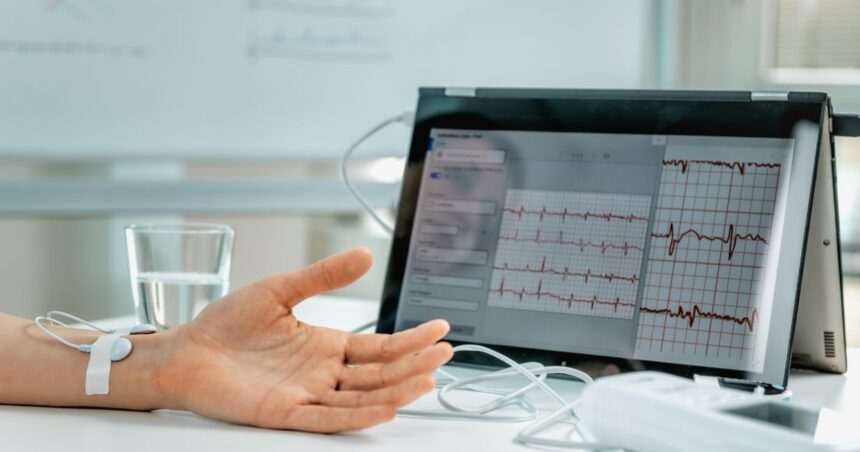Electrocardiograms (ECGs) are essential tools in modern medicine. They monitor the heart’s electrical activity and detect potential problems. Their accuracy is critical in diagnosing arrhythmias, heart attacks, and other cardiac issues.
However, how reliable are ECG results, and what factors can influence their precision? Let’s break down the technology behind ECGs, how they work, and what you need to know about their accuracy.
What Is an ECG and How Does It Work?
An electrocardiogram, or ECG, records the electrical signals that control your heart’s rhythm. These signals are displayed as waveforms, which doctors analyze to identify irregularities or other signs of heart trouble.
How an ECG Works:
- Electrodes Placement: Small sensors are attached to specific points on your chest, arms, and legs.
- Signal Recording: These sensors detect the electrical activity of your heart.
- Waveform Display: The data is displayed as a graph showing the timing and strength of each heartbeat.
This process is quick, painless, and typically completed in a few minutes.
Factors That Affect ECG Accuracy
While ECGs are highly effective, certain factors can influence their results.
Patient-Related Factors
- Movement: Excessive movement during the test can create “noise” or distortions in the results.
- Skin Conditions: Excessive sweating or oily skin can reduce electrode contact quality.
- Anxiety: Stress or nervousness can temporarily alter heart rhythm, affecting readings.
Equipment-Related Factors
- Electrode Placement: Improper positioning can result in inaccurate readings.
- Calibration Issues: Outdated or poorly maintained machines may produce less reliable results.
By addressing these variables, healthcare providers can ensure more precise readings.
How Reliable Are ECG Results?
When performed correctly, ECGs are highly reliable for detecting heart conditions. They excel at identifying:
- Arrhythmias: Abnormal heart rhythms, such as atrial fibrillation or tachycardia.
- Heart Attacks: ECGs can reveal changes associated with acute cardiac events.
- Structural Issues: Conditions like left ventricular hypertrophy or heart enlargement.
However, it’s important to note that ECGs are not perfect. For example:
- False Positives: Sometimes, an ECG may suggest a problem that isn’t there, leading to unnecessary further testing.
- False Negatives: In rare cases, a heart issue may not be detected if it’s intermittent or outside the scope of the test.
Advancements in ECG Technology
Modern technology has enhanced the accuracy and usability of ECGs. Innovations include:
- Portable ECG Devices: Wearable monitors provide long-term data, improving the detection of irregular heart rhythms.
- AI Integration: Artificial intelligence helps analyze ECG data more precisely, reducing human error.
- Wireless Technology: Eliminates issues caused by tangled wires or poor connections.
These advancements are making ECGs more reliable and accessible for patients worldwide.
The Heartbeat of Reliable Diagnostics
ECGs are a cornerstone of cardiac care, offering a quick and effective way to evaluate heart health. While not flawless, their accuracy is high when performed under the right conditions. By understanding the factors that affect results and leveraging technological advancements, doctors can make informed decisions that lead to better outcomes.
If you’re experiencing symptoms like chest pain or an irregular heartbeat, an ECG might be the first step in uncovering the cause and protecting your heart health.

